Equine Anatomy and Tack Naming
1/41
Earn XP
Description and Tags
Use this to help with your naming of various tack parts and anatomy of equines. :)
Name | Mastery | Learn | Test | Matching | Spaced |
|---|
No study sessions yet.
42 Terms
Horse
Equines above 14.2 hands at the withers. They are often used for riding, driving, and various equestrian sports. Horses are known for their strength, agility, and diverse breeds, each with unique characteristics and temperaments. Examples of breeds are: Thoroughbred, Arabian, American Quarter Horse
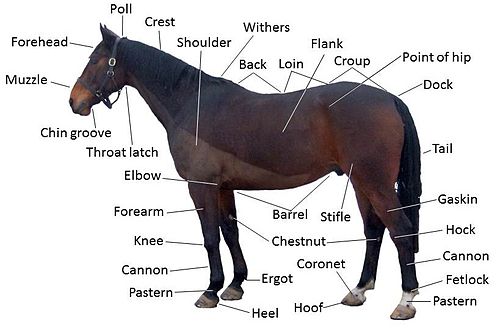
Pony
Equines below 14.2 hands at the withers. Smaller than horses and often have thicker manes, tails, and coats, as well as proportionally shorter legs, wider barrels, and heavier bones. Examples of breeds are: Shetland Pony, Welsh Pony, Connemara Pony, Pony of the Americas, and Dartmoor Pony.
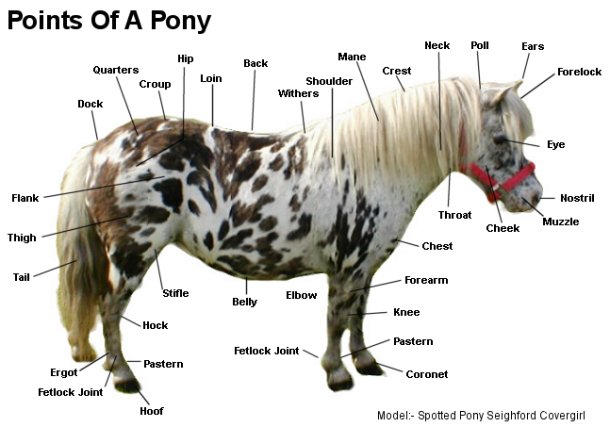
Saddle
A supportive structure placed on a horse's back to facilitate riding, usually with stirrups and a girth. Where the rider sits. It distributes the rider's weight and helps maintain balance.

Saddle Pad
A cushioning layer placed between the saddle and the horse's back for comfort and protection.
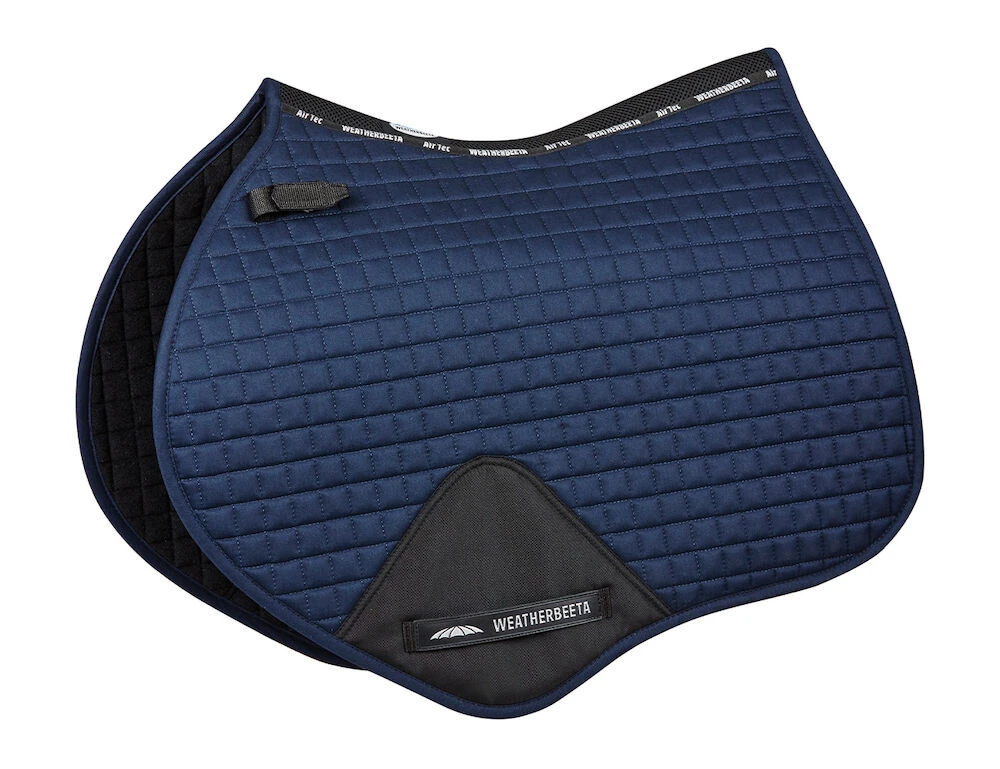
Bridle
Headgear to control a horse, used while riding to guide the horse where you want to go. It consists of various parts, including the bit and reins, and is essential for communication between the rider and the horse.
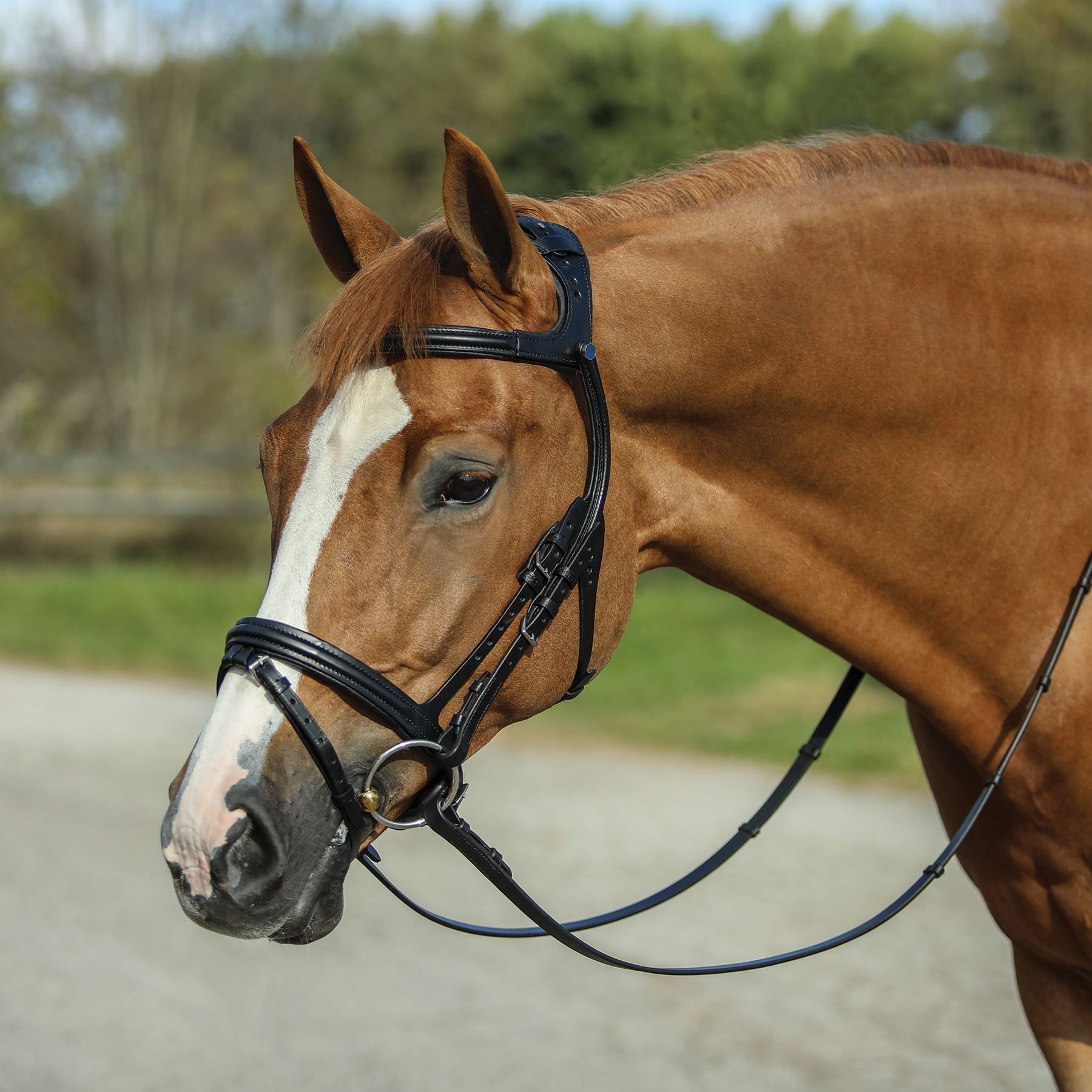
Halter
A type of headgear used to lead or tie a horse, typically made of rope or nylon, without a bit. It is used for handling horses on the ground and is essential for tying them securely.
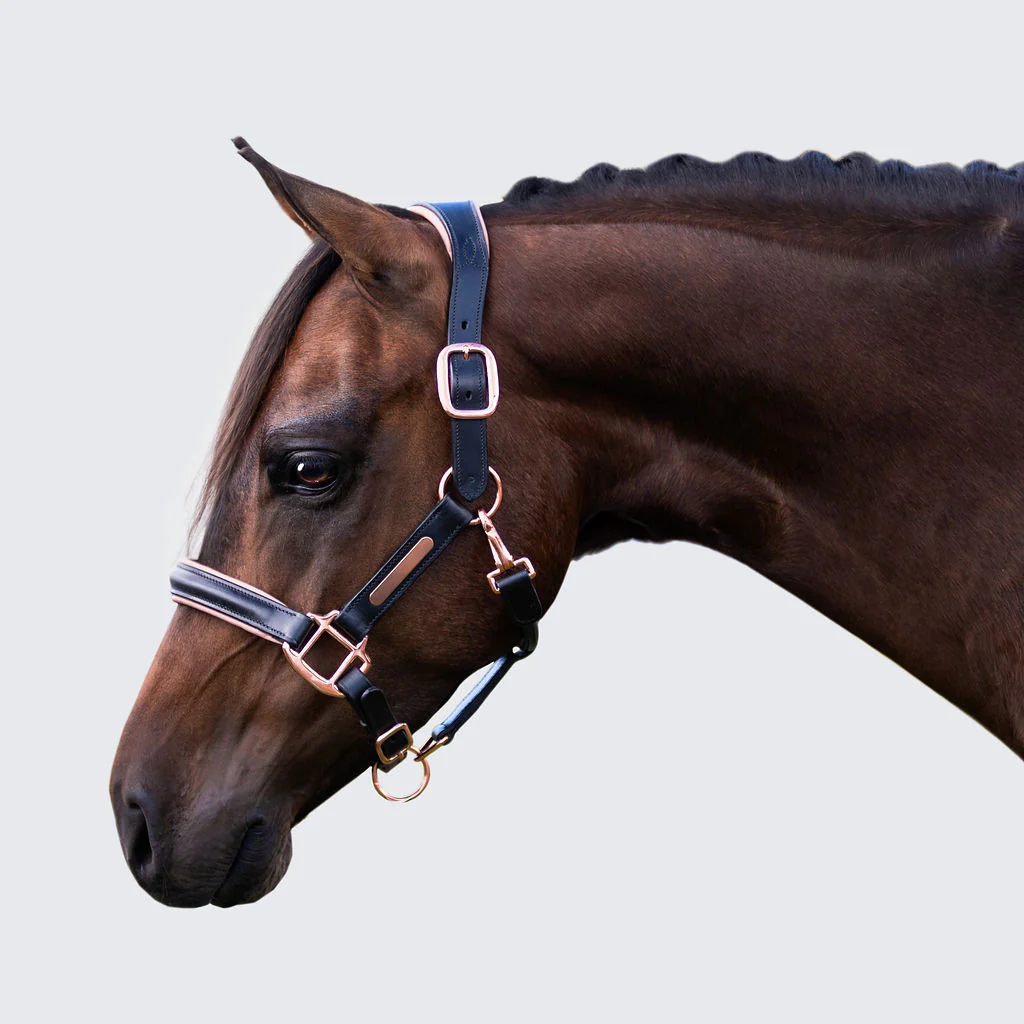
Lead Rope
A long, thick rope attached to a halter or headcollar for leading and controlling a horse.

Stirups
Supportive metal or synthetic devices that attach to the saddle's stirrup leathers, used for foot placement and stability, providing support for the rider's legs.

Girth
A strap that goes around a horse's belly to secure the saddle in place, ensuring it does not shift during riding. The elastic side should always be put on the right side and adjusted from the left.

Order of putting on Tack
When the horse is secured at the fence, the saddle pad is placed on first, followed by the saddle, girth, and then the bridle.
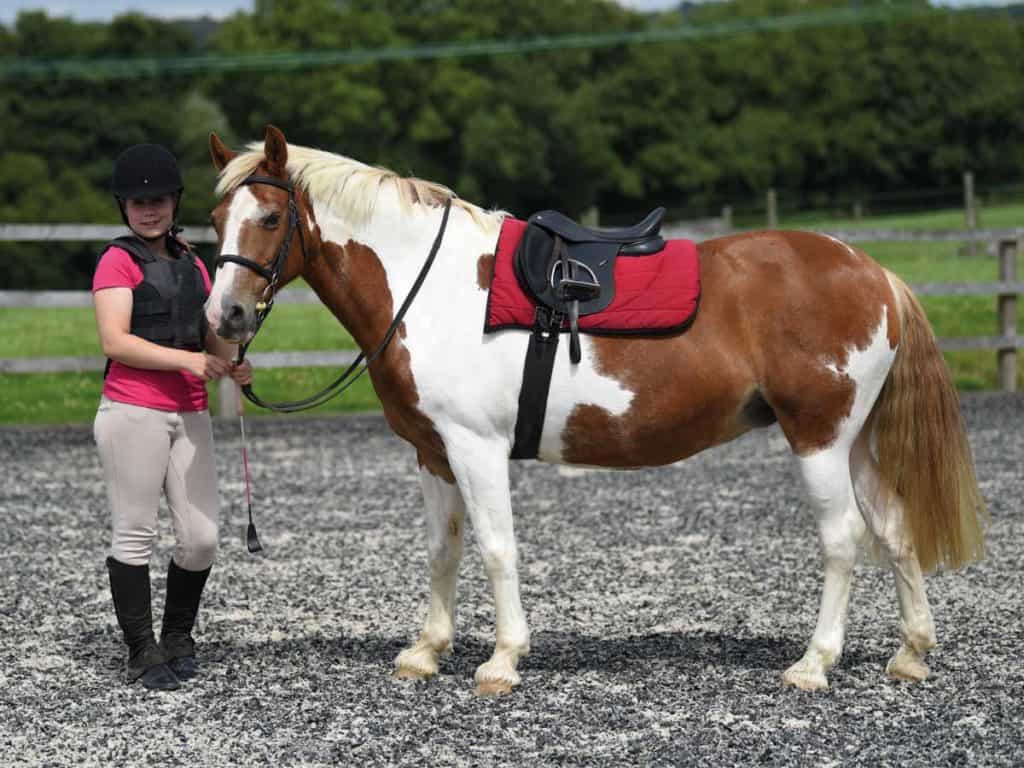
Curry Comb
A grooming tool used to loosen dirt, mud, and loose hair from a horse's coat. It has a rubber or plastic surface with short, flexible teeth. It should be used in a circular motion.
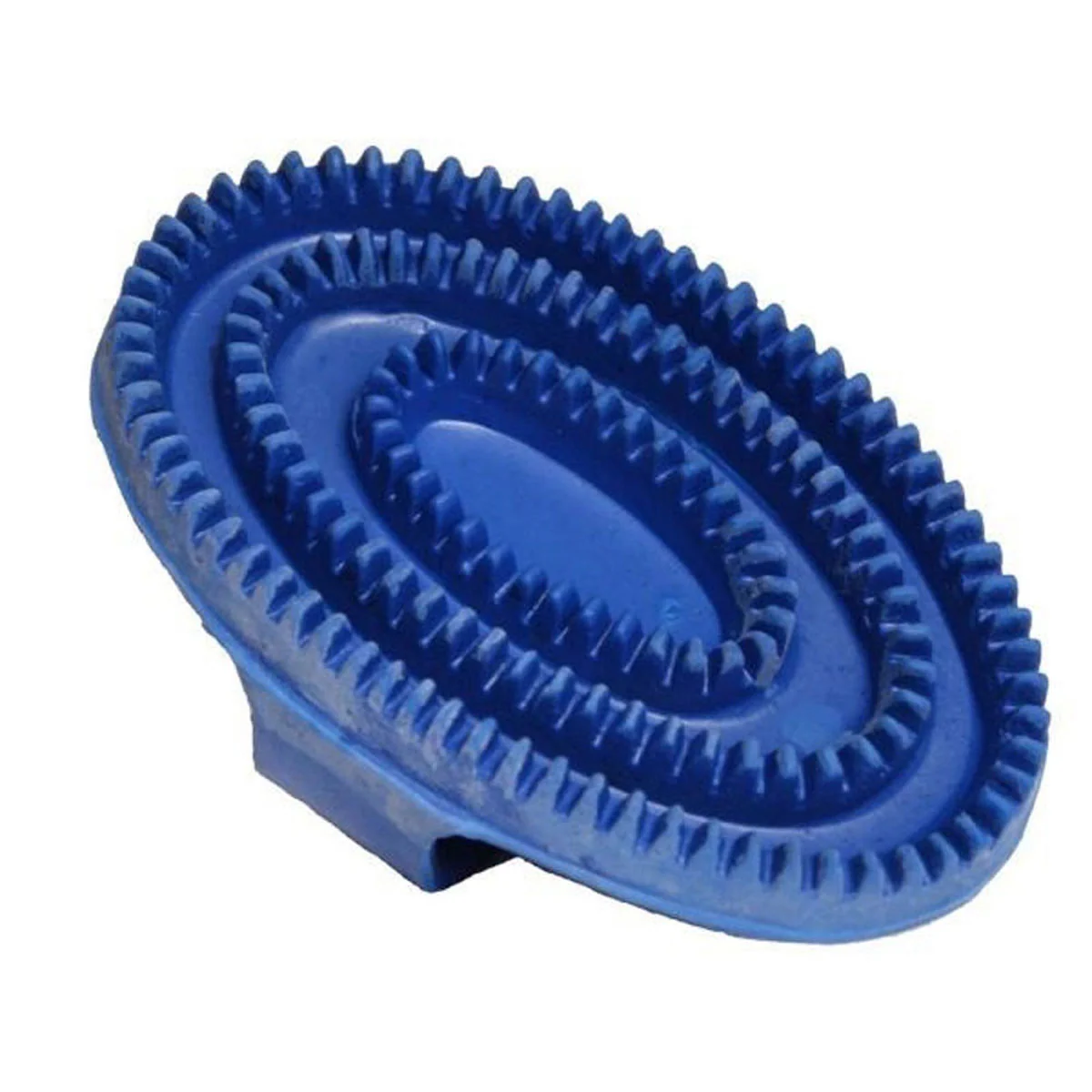
Hard Brush
A grooming tool with stiff bristles used to remove dirt, mud, and loose hair from a horse's coat. It should be used in a blunt, straight motion.
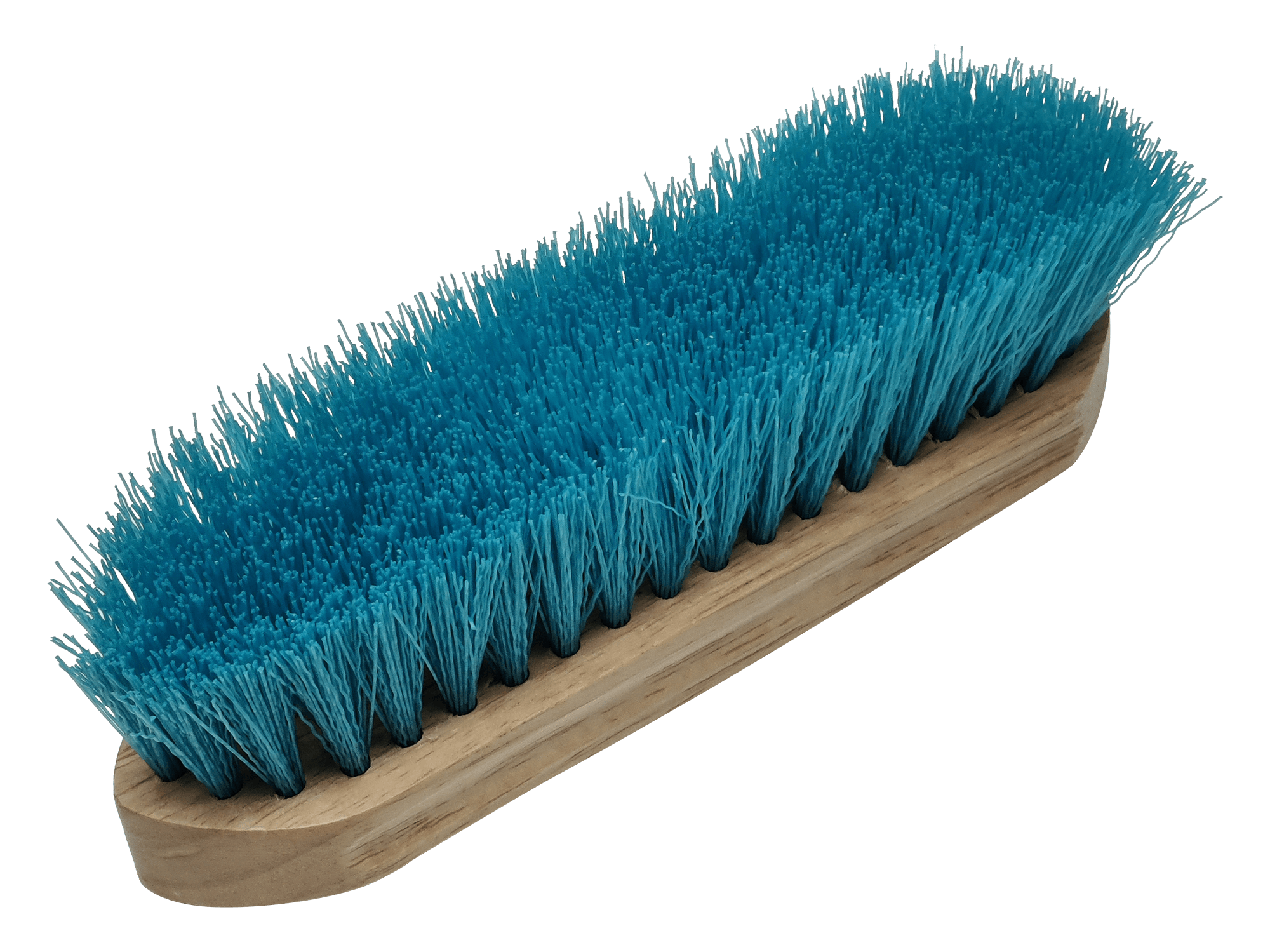
Hoof Pick
A tool designed for cleaning out the hooves of a horse, removing debris and stones to prevent lameness and infection. Rider should face the back of the horse while using it and ensure the horse is properly tied.

Order of Horse Grooming
Ensure the horse is secure. Horses must first be groomed with the soft brush/curry comb to release dirt, and then the dirt should be removed with the hard brush before using the hoof pick.
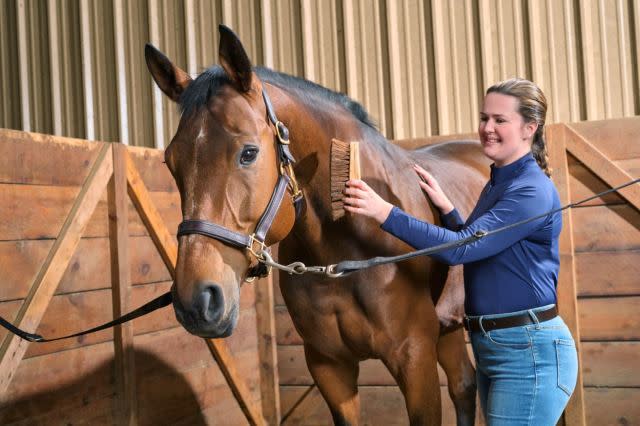
All Parts of Saddle (English)
Pommel, Gullet, Skirt, Twist, Seat, Cantle, Panels, Knee Roll, Flap, Stirrup Bar, Stirrup Leather Keeper

Pommel
The front part of the saddle that sits above the horse’s withers. It provides leverage and balance for the rider and is higher on some saddles than others.

Gullet

Skirt
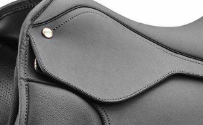
Twist
Seat
Cantle
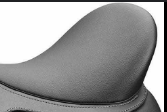
Panel

Knee Roll
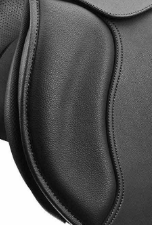
Flap

Stirrup Leather Keeper
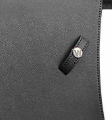
Stirrup Bar
All Parts of Bridle
Nose band, Brow band, Throat Latch, Bit, Crown Piece, Cheek Piece
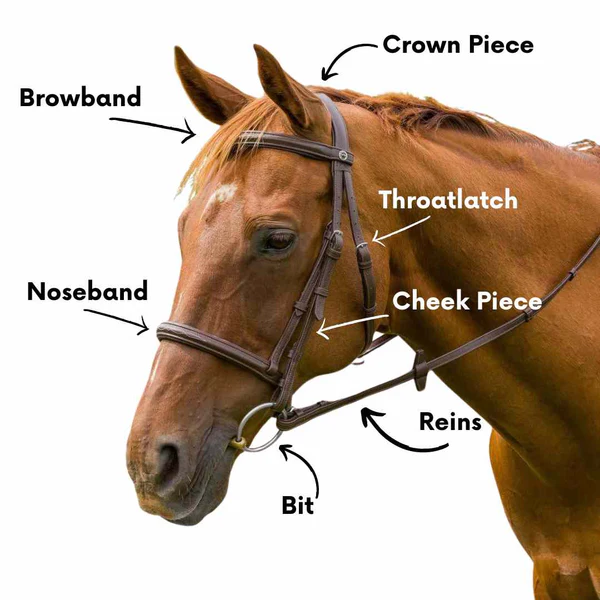
Nose Band
A strap that encircles the horse's nose and plays a crucial role in ensuring the horse's mouth remains closed. It should be adjusted to fit two fingers.

Throat Latch
A strap that is part of the bridle, fitting under the horse's throat and connecting to the crown piece. Its purpose is to prevent the bridle from slipping over the horse's head. It should be adjusted to fit one fist.
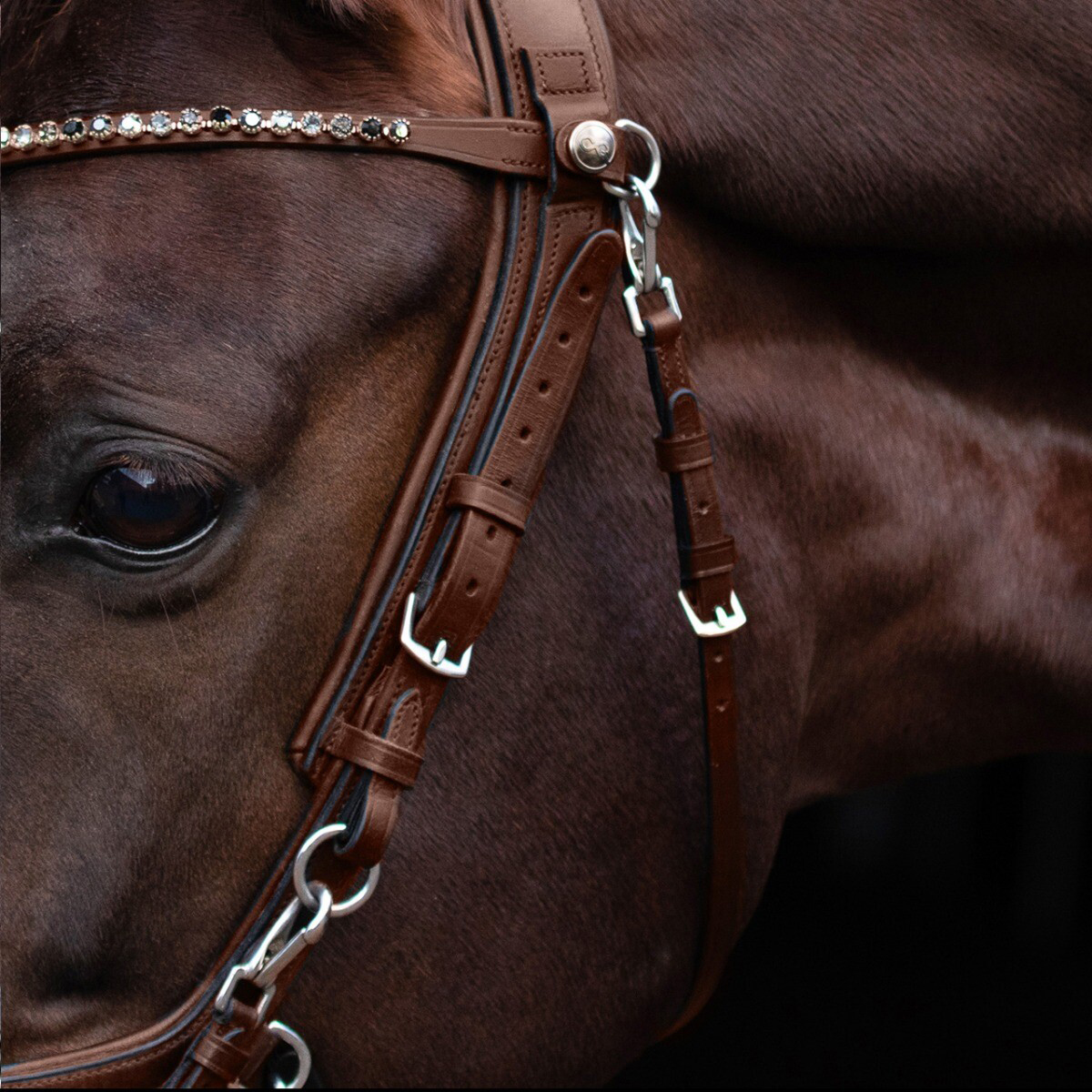
Brow Band
A strap that runs across the horse's forehead, just below the ears, and connects to the crown piece on either side of the bridle. It prevents the bridle from sliding too far back towards the horse's neck.
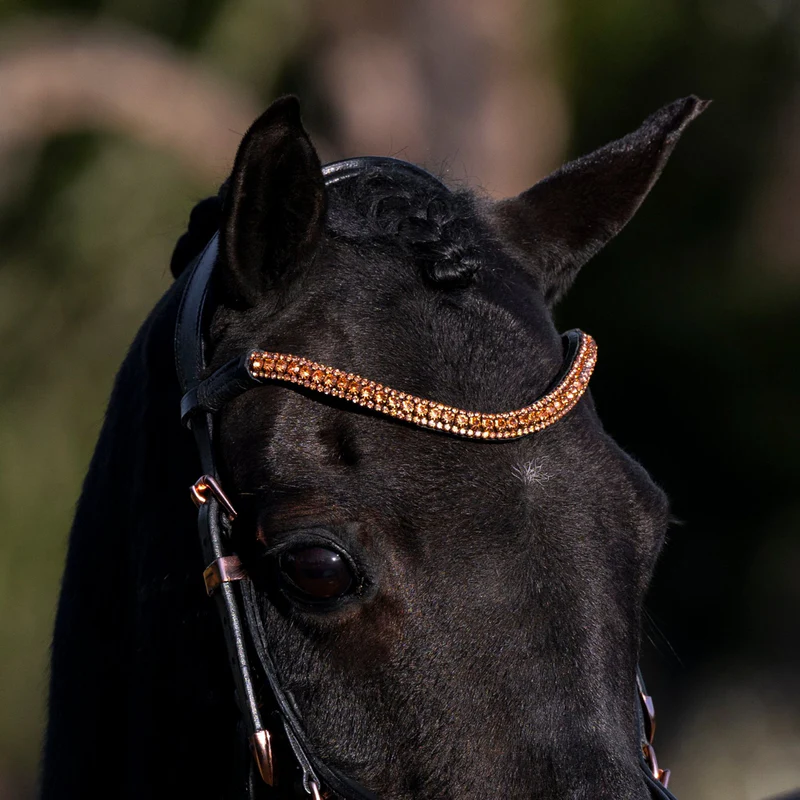
Reins
Long straps, typically made of leather or synthetic material, connected to the bit of the bridle and held by the rider. The primary means of communication between the rider's hands and the horse's mouth, used to guide the horse's direction, control its speed, and signal various commands.
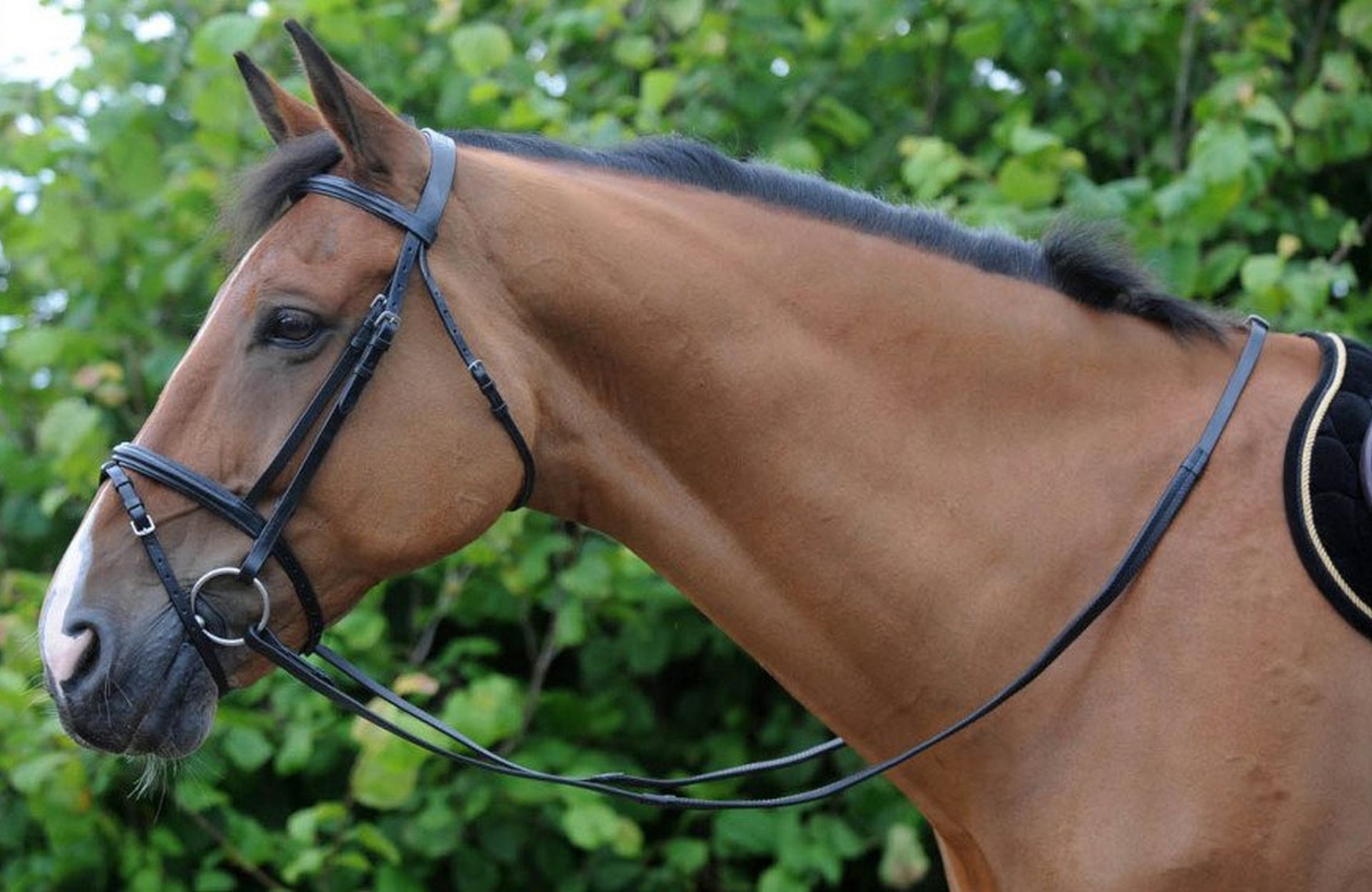
Crown Piece
The crown piece, also known as the headstall, is a critical part of the bridle that sits directly behind the horse's ears, running across the poll (the highest point on the horse's head between the ears). It connects to the cheek pieces, browband, and throatlatch, holding the bridle securely in place.
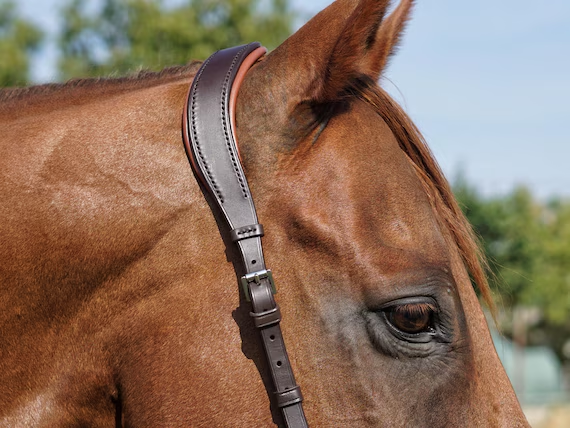
Cheek Piece
Straps on either side of the bridle that connect the bit to the crown piece, running along the horse's cheeks. They play a pivotal role in ensuring the bit is correctly positioned in the horse's mouth and that the rider's rein aids are effectively transmitted.
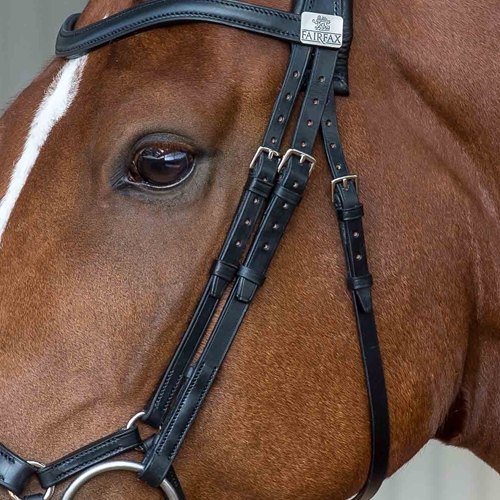
Bit
An essential part of the bridle. It is placed in the horse's mouth and is crucial for communication between the rider and the horse. It applies pressure to specific areas inside the mouth, allowing the rider to control the horse's pace, direction, and behavior.
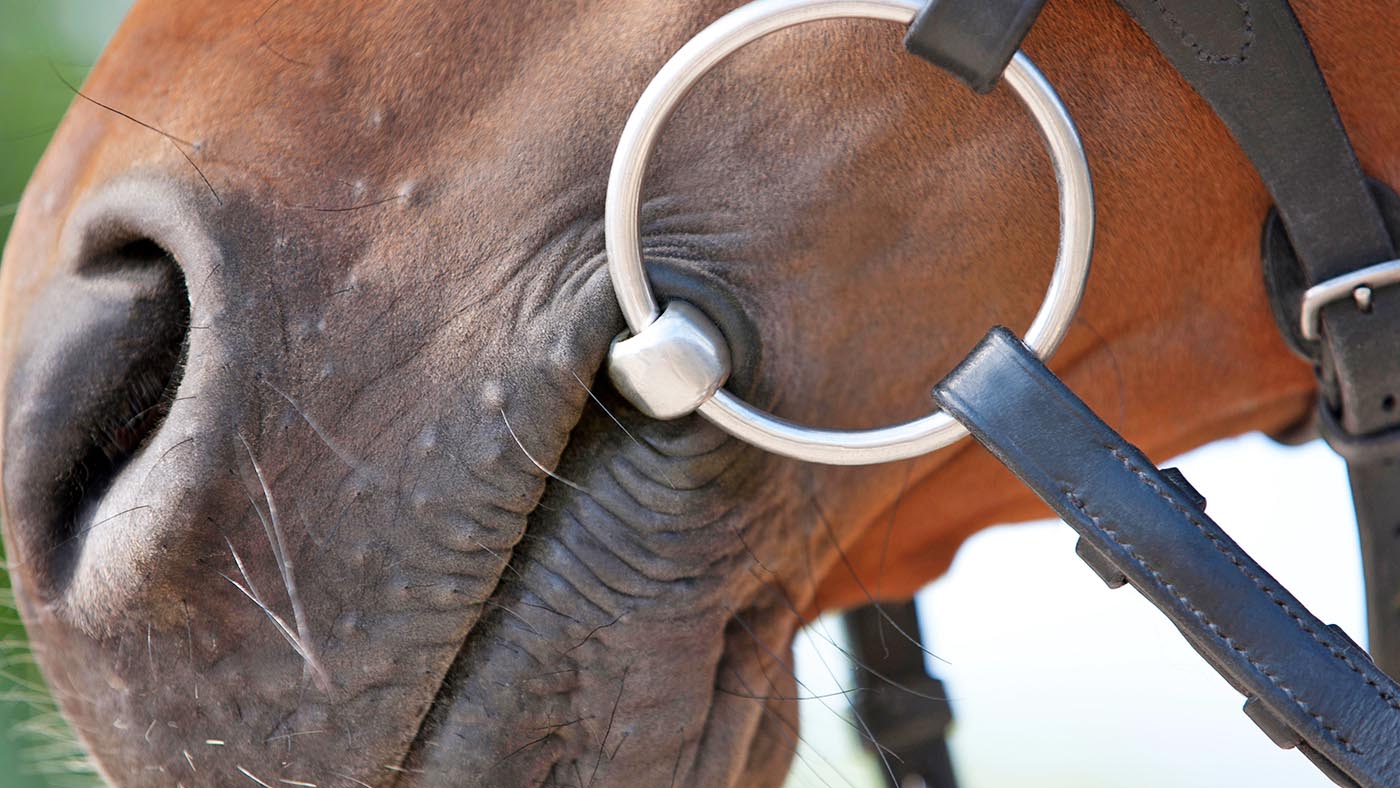
All Parts of Halter
Throat Latch, Chin Strap, Cheek Strap, Crown Strap, Gullet Strap, Nose Band
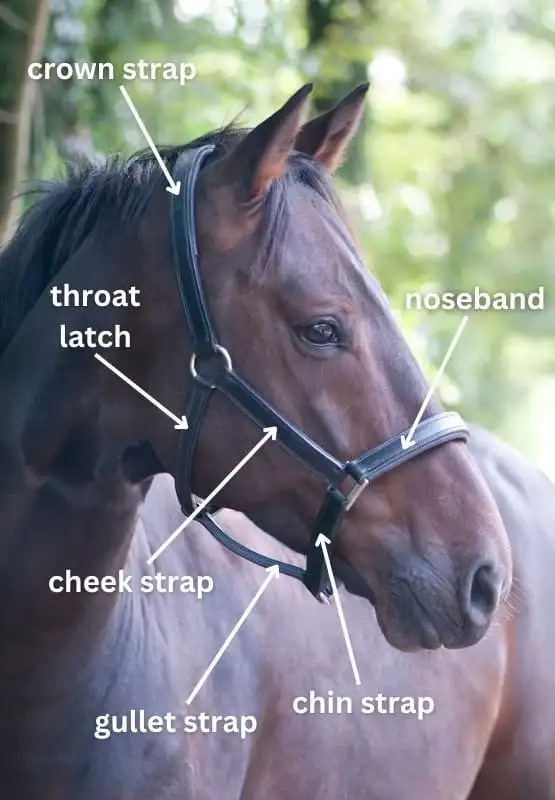
Throat Latch
Chin Strap
Crown Strap
Gullet Strap
Cheek Strap
Nose Band
All Parts of Horse